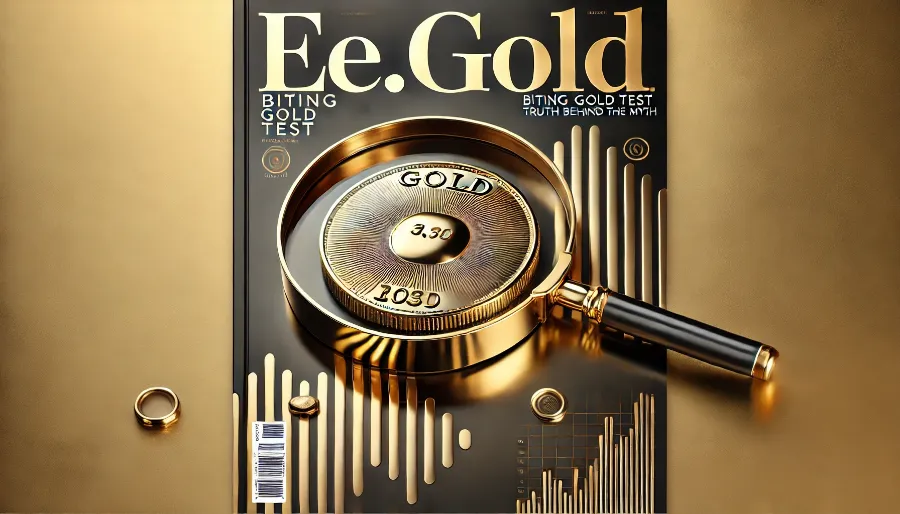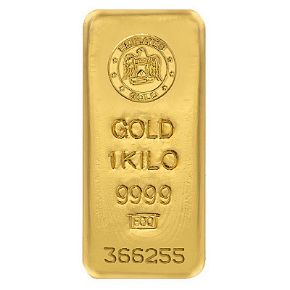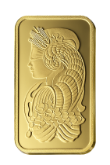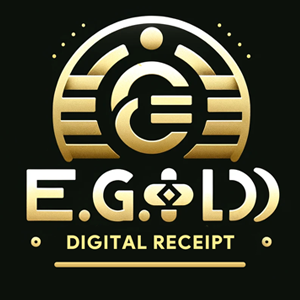
The biting gold test is one of the most iconic ways to identify real gold, made famous by movies, cartoons, and historical anecdotes. You’ve probably seen a character biting into a gold coin to determine if it’s authentic. But is this method truly reliable, or is it just a popular myth? In this article, we’ll explore how the biting gold test works, its limitations, and why modern methods might be better suited for verifying gold’s authenticity.
What is the Biting Gold Test?
The biting gold test involves gently biting a piece of gold to check its softness. Pure gold is a soft metal that can be indented with teeth, so the idea is that biting into real gold should leave a small mark or dent. Conversely, metals that are harder than gold—such as brass or fake alloys—will not dent easily, helping to distinguish real gold from counterfeit materials.
How Does the Biting Gold Test Work?
- Bite Down Gently: Hold the gold item (e.g., a coin or jewelry piece) between your teeth and apply light pressure.
- Look for Dents: If the gold is real, it should show small bite marks or indentations.
- Examine for Hardness: If the gold resists denting or feels unusually hard, it may not be pure gold.
Why Gold is Soft Enough for This Test
Gold is one of the softest and most malleable metals. On the Mohs scale of mineral hardness, pure gold (24K) ranks at 2.5, which means it can be scratched or dented more easily than harder metals like brass, copper, or nickel.
For reference:
- Gold: Soft and easily indented.
- Fake Metals or Alloys: Usually harder, leaving no marks when bitten.
However, gold that is alloyed with other metals to create 18K, 14K, or 10K gold may feel harder and not dent as easily, making the biting test less reliable for these variations.
Limitations of the Biting Gold Test
While the biting gold test has historical significance, it has several limitations:
- Gold-Plated Items: Fake items with a gold-plated surface will pass the biting test because the soft outer gold layer can dent, even though the core is not real gold.
- Mixed Alloys: Gold items that are alloyed with harder metals (e.g., 14K or 10K) may not dent easily.
- Damage to Teeth: Biting down on gold can damage your teeth, especially if the item is hard or fake.
- Non-Scientific: This method doesn’t confirm the karat value or purity of gold, making it unreliable for serious testing.
In short, while the biting test may work in some cases, it’s not a foolproof method and can lead to false positives or negatives.
When the Biting Gold Test Was Popular
The biting gold test has historical roots, particularly during the days of the Gold Rush and when gold coins were used as currency. In the absence of modern tools, miners, merchants, and even thieves would bite into gold coins to verify their authenticity.
This test became popular because:
- It was simple and required no tools.
- Pure gold coins were more common at the time, making the method more effective than it is today.
However, with the rise of counterfeit coins, gold plating, and alloyed gold, this test has become less reliable.
Modern Alternatives to the Biting Gold Test
To verify gold authenticity accurately, modern testing methods are much more reliable and safe. Here are some alternatives:
- Magnet Test
- Real gold is non-magnetic. If your gold item is attracted to a magnet, it’s likely fake.
- Density Test
- Pure gold has a density of 19.3 g/cm³. Measuring weight and volume can confirm whether the gold is real.
- Acid Test
- Acid testing kits are inexpensive and reliable for identifying gold purity. They can distinguish between pure gold and fake materials.
- XRF Spectrometry
- A non-destructive test that uses X-rays to analyze the composition of gold.
- Hallmark Inspection
- Look for karat stamps (e.g., 24K, 18K) or purity numbers (e.g., 999) on the item.
- Electronic Gold Testers
- These devices test gold’s electrical conductivity to determine its purity and authenticity.
Pros and Cons of the Biting Gold Test
| Pros | Cons |
|---|---|
| Easy to perform, no tools required | Can damage your teeth |
| Works for pure, soft gold (24K) | Not reliable for gold-plated or alloyed items |
| Historically iconic and quick | Cannot confirm karat value or purity |
FAQs About the Biting Gold Test
1. Is the biting gold test reliable?
The test can identify pure gold, but it’s unreliable for gold-plated or alloyed items and doesn’t confirm gold purity.
2. Can biting gold damage my teeth?
Yes, biting hard metals or fake gold can chip or damage your teeth.
3. Why does real gold dent when bitten?
Pure gold is soft and malleable, which allows it to show bite marks.
4. Can gold-plated items pass the biting test?
Yes, because the outer layer of real gold is soft, even if the core is fake.
5. What’s the safest way to test gold?
Modern methods like magnet tests, acid tests, and XRF spectrometry are safer and more reliable than biting.
6. Does biting gold damage the item?
Biting can leave marks or dents, which may devalue collectible coins or jewelry.
7. Is the biting gold test still used today?
While iconic, the test is rarely used today due to the availability of more accurate and non-damaging methods.
How the Biting Gold Test Became a Cultural Symbol
The biting gold test has gained iconic status in popular culture due to its frequent depiction in movies, cartoons, and historical anecdotes. It’s often associated with treasure hunters, pirates, and gold miners. This imagery has cemented the test as a symbol of wealth and authenticity, even though its practicality is limited in the modern world.
Why the Biting Gold Test Captures Imagination
- Dramatic Appeal: The visual of someone biting into a shiny gold coin adds drama and suspense to storytelling.
- Symbol of Wealth: Gold is universally recognized as valuable, and the biting test symbolizes verifying that wealth.
- Historical Relevance: The test recalls the simplicity and ingenuity of past eras when high-tech tools weren’t available.
While the biting gold test may not be scientifically reliable, its symbolic value has made it a lasting part of gold-related folklore.
Why Modern Methods are Better Than the Biting Test
As technology advances, there’s no longer a need to rely on outdated methods like the biting gold test. Here’s why modern methods are more effective:
- Accuracy: Modern tools can precisely determine gold’s composition and karat value.
- Safety: Non-destructive testing protects both the gold item and your teeth.
- Convenience: Many testing methods, like magnet tests and acid kits, are affordable and easy to use at home.
- Reliability: Advanced tools like XRF spectrometry leave little room for error, ensuring 100% accuracy.
Can You Still Use the Biting Gold Test?
While the biting gold test is largely obsolete, you can still use it as a quick and basic indicator under certain conditions:
- When You’re Dealing with Pure Gold: If you’re certain the item is 24K gold, biting may reveal its softness.
- In Emergency Situations: If no tools are available, biting may help identify fake gold, but it should not be relied upon alone.
If you choose to use the biting test, follow these precautions:
- Bite Gently: Avoid damaging your teeth or the item.
- Inspect Carefully: Combine this test with visual inspections for hallmarks or other signs of authenticity.
- Seek Professional Verification: Always confirm results with more reliable methods.
The Rise of Counterfeit Gold and Why Testing Matters
In today’s market, counterfeit gold is more sophisticated than ever. Common types of fake gold include:
- Gold-Plated Items: Cheap metals like brass or copper are coated with a thin layer of gold.
- Tungsten Core Gold Bars: Tungsten, with a similar density to gold, is used to create counterfeit bars with a gold exterior.
- Alloyed Gold: Some fake items use a mix of metals that mimic gold’s weight and appearance.
With counterfeit techniques becoming more advanced, the importance of accurate gold testing has never been greater. This is why modern tools and methods are essential for anyone buying or selling gold.
Advanced Gold Testing Techniques
For investors, collectors, and jewelers, these advanced methods provide unparalleled accuracy:
1. Ultrasound Testing
- Uses sound waves to detect inconsistencies in the gold’s structure.
- Ideal for testing thick gold bars or items where other methods might fail.
2. Fisch Tester
- A manual device designed to check the dimensions and weight of gold coins.
- Useful for verifying standard coins like the American Gold Eagle or Krugerrand.
3. Digital Conductivity Testing
- Measures gold’s electrical conductivity to confirm its purity.
- Effective for detecting counterfeit gold-plated items.
4. Professional Appraisals
- Jewelers and precious metals dealers can provide expert evaluations using multiple testing tools.
- Appraisals often come with certifications for added peace of mind.
What You Can Learn From Gold’s Karat Markings
Before resorting to any testing method, start by inspecting the gold item for markings that indicate its karat value or purity:
- 24K: Pure gold (99.9%). Soft and ideal for the biting test.
- 18K: 75% gold, mixed with other metals for durability.
- 14K: 58.3% gold, commonly used in jewelry.
- 10K: 41.7% gold, the minimum purity allowed to be labeled as gold in the U.S.
Markings can also include hallmarks from government mints or reputable jewelers, such as the Royal Canadian Mint (RCM) or PAMP Suisse.
Comparing the Biting Test to Modern Methods
| Aspect | Biting Test | Modern Methods |
|---|---|---|
| Accuracy | Low, prone to errors | High, nearly foolproof |
| Damage Risk | High (to teeth and gold item) | Low to none |
| Ease of Use | Simple but unreliable | Varies (from easy to professional tools) |
| Cost | Free | Inexpensive to moderate |
| Reliability | Inconsistent, depends on item type | Consistent and precise |
Final Thoughts
The biting gold test may be an intriguing piece of history and cultural symbolism, but it’s no longer a reliable way to verify gold’s authenticity. Modern testing methods like magnet tests, acid kits, and XRF spectrometry are far more accurate and safer for both you and your gold.
NOTE
This Content is the copyrighted content of EE.GOLD. All rights are reserved. You are welcome to share or use our content only by including direct links to our website. Any other form of reproduction, distribution, or use without proper attribution is strictly prohibited.
This Content is intended solely for educational purposes. The information provided does not constitute financial or investment advice.
Please note that Digital Storage Receipt, Secure Storage Solutions, and Physical Gold Sales are the only services offered by EE.GOLD.
We strictly adhere to government regulations and are firmly against all illegal financial or investment activities globally.
For further inquiries, feel free to contact us through our official channels.










.png)

